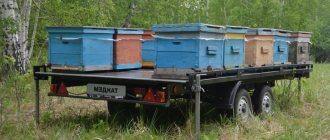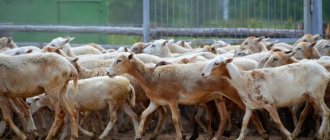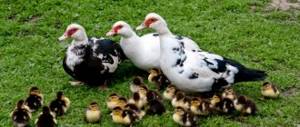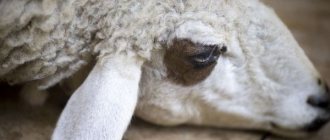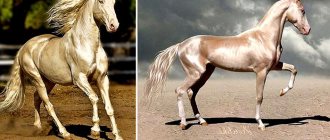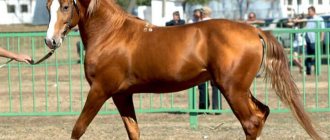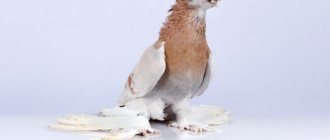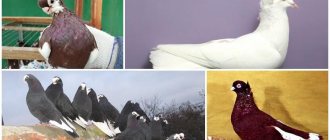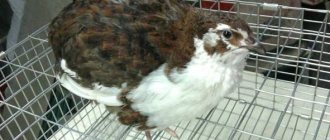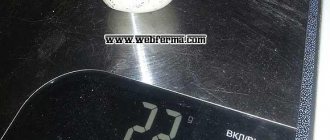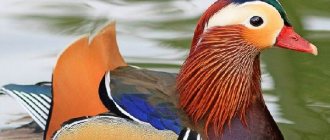Breeders have managed to develop a huge number of new breeds of sheep, which cannot but please livestock breeders. The fact is that each type of animal has its own unique set of features that the farmer needs in different conditions. One of the most common breeds is the Kuibyshev sheep. This variety owes its popularity to the good quality of wool and meat, as well as its unpretentiousness. Many farmers prefer to breed this breed, because for the Russian climate, Kuibyshev sheep are the best option.
General characteristics of this breed
Experienced livestock breeders are well acquainted with this breed, since its prevalence is high. This variety of sheep is a creation of the domestic livestock industry. Kuibyshev sheep are excellent for Russian conditions.
Initially, breeders wanted to develop a breed for the Russian climate, which is not very suitable for rams. We managed to do this. The meat and wool qualities of Kuibyshev sheep are combined with unpretentiousness and adaptation to external conditions. This species is actively bred in many regions of Russia, especially widely in the Volga region.
Of course, when breeding these sheep, some of the outstanding qualities of their “ancestors” had to be sacrificed. However, this was done because it was important for breeders to preserve the unpretentiousness of the breed, without which it would lose its meaning for livestock breeders. Farmers with more experience know that it is easier to farm a less productive but persistent species.
Appearance of Kuibyshev sheep
The Kuibyshev sheep is easy to recognize by its appearance, since this breed has its own distinctive characteristics. This species is large in size and looks massive, as its solid bones are combined with well-developed muscles. A distinctive feature of this breed is the shape of the body, which resembles an elongated barrel.
The head of sheep and rams is wide and practically devoid of hair. The neck is short and powerful. The back of the animal resembles a plateau, because it is flat and wide. The legs of Kuibyshev sheep correspond to their structure and are strong, short and powerful. This makes it possible to provide good stability to such a heavy body. Representatives of both sexes lack horns.
Animal fur has the following characteristics:
- White uniform color;
- Nice shine;
- Strong coarse crimp of the fur;
- Length on average 12-15 centimeters;
- Hair growth in animals is uniform.
On average, it is possible to collect up to 5 kilograms of wool from one sheep, and up to 7 kilograms from rams. It must be borne in mind that such indicators can only be obtained if the livestock is properly maintained and fed.
The weight of an adult male can reach 100 kilograms, and females - 50-60 kilograms. Such indicators can only be achieved with proper sheep breeding.
Description and characteristics of the Kuibyshev breed
Also check out these articles
- Tomato sauce recipes for the winter
- Libya grape variety
- Apricot variety Academician
- Growing tomatoes in a greenhouse
The entire body is covered with thick, dense white hair.
Externally, the Kuibyshev breed of sheep looks very cute; representatives of the species have funny faces, as if they had just come out of a cartoon. But in fact, these are powerful individuals, with a muscular, elongated body and strong bones. All parts of the body are proportional, nothing stands out. Legs are short. The neck is strong, the head is wide. The ears protrude from the sides of the head. There are no horns.
The entire body is covered with thick, dense white hair. There is no hair on the face and ears, there is little hair on the lower legs, or near the hooves. Slight darkening of the ears and legs is acceptable, but other parts of the body have exclusively white fur and skin. The structure of the fleece can be spatula or spatula-braided.
History of the appearance of the species
Kuibyshev sheep are the pride of Russian livestock breeders. This breed was the first that our breeders managed to breed. This species received its name due to the area in which breeding took place. For crossing, Cherkasy coarse-haired breeds and English Romney March were taken. It was important for breeders to develop a combination of good performance and relative unpretentiousness.
Livestock specialists Nekrasov, Vatagin and Vasiliev made a special contribution to the development of this breed and are considered its creators. Thanks to breeders, the world saw a new type of sheep, adapted to difficult climatic conditions. Unlike local species, this breed has decent meat and wool characteristics.
Breeding history
The Kuibyshev breed sheep belongs to a large group of semi-fine-fleece animals. The history of breeding began in the Samara region in the 30-40s of the last century on the collective farms of the Kuibyshev region.
Breeders used coarse-wooled Cherkassy sheep as a mother breed. They were distinguished by their large size, had a strong constitution and a satisfactory clip of long hair.
The Romney Marsh sheep breed took part in the reproductive crossbreeding. As an improving breed, it passed on increased meat and wool qualities to its descendants.
Why do farmers choose this breed for breeding?
Of course, every livestock breeder is primarily interested in economic benefits. Therefore, any new type of pet is considered in terms of benefits and quantity of the final product. As for sheep, not only the quantity of raw materials obtained is important, but also its quality. This is significantly reflected in the price.
So, this is how the productivity of this breed is characterized:
- The meat products of the breed are of good quality. With proper fattening, an adult sheep can reach 110 kilograms.
- The breed's wool is of high quality and is valued among producers. Clothes made from such raw materials are warm and soft, which determines the demand for them. From one individual you can get about 7.5 kilograms of wool. The final yield will be almost 70% of the total mass of the primary raw material.
- The milk of this breed has many beneficial properties and tastes good. One sheep can produce up to 2 liters per day.
- The breed's fertility is satisfactory and allows for rapid breeding of animals.
How is it different from other breeds?
It is important to know how this breed differs from other species. The main advantage and distinctive feature is adaptation to the most severe weather conditions. Kuibyshev sheep can easily withstand even the coldest weather. At the same time, this species can tolerate abnormal heat with the same ease. Therefore, this breed is simply irreplaceable for those areas where aggressive weather conditions are observed and sudden temperature changes are characteristic.
You can also highlight the good fertility of sheep, which allows you to breed large herds. The young animals of this breed grow and develop quickly. This gives the farmer a quick payback and access to a high income. This combination of characteristics makes these lambs attractive to our farmers. This species has been bred in Russia for almost a century and has proven itself to be excellent.
Advantages and disadvantages of the breed
To understand whether it is profitable to start a farm with Kuibyshev sheep or not, you need to weigh the pros and cons and consider the advantages and disadvantages of this breed.
The advantages of this type of sheep:
- They quickly adapt to weather conditions, when in the summer the climate is hot, and in winter the weather, on the contrary, is cold and harsh.
- The breed's wool is valued on the market. Raw materials are always in demand among manufacturers, since clothes made from such sheepskin are of high quality, warm and soft.
- Lambs have good survival rate and growth rate, which allows obtaining a yield of meat products.
- The meat has good organoleptic properties. Lamb of this breed is quite soft, has an even distribution of fatty streaks, so its pattern vaguely resembles marbling.
- The smell of lamb is not too pronounced, which determines the high demand for this raw material.
- Fertility, which determines the economic benefit of the breed.
- Unpretentiousness in terms of food and living conditions.
At the same time, among the disadvantages is that Kuibyshev sheep are unsuitable for growing on dry pastures with poor pasture. Under such conditions, the productivity of the breed will drop sharply. Keeping sheep will become economically unprofitable.
Maintenance and breeding
Kuibyshev sheep take full advantage of their high adaptability to various climate conditions. Ease of maintenance and unpretentiousness in food gave them the opportunity to spread widely not only throughout the territories of the post-Soviet space, but also far beyond their borders. The early maturity indicator also had a favorable effect on its popularity among sheep farmers, and not only that.
Read also: How to open a dairy farm
Breeding of this breed has rapidly spread among private households. As shown in the video, this breed does well in the summer on any pasture with low-growing grass and in the winter in a stall. They do not require special comfort in maintenance and diet.
The most important thing is that it is dry, without dampness. To preserve the quality of the wool, there should be nothing in the hangar that can damage it or injure the skin. The pen is equipped with a canopy to protect it from precipitation and prevent the wool from deteriorating from getting wet. Due to excellent cold tolerance, there is no need to insulate the premises where the herd is kept. During construction, you need to take into account the dimensions: 2 sq. m per individual and moisture-resistant materials, as shown in the video.
Advantages of breeding the breed from an economic point of view
If we consider this breed from the point of view of making a profit, then it is promising in this direction. Kuibyshev sheep are a meat and wool variety. This means that from one animal you can get high quality wool and meat.
Most breeds produce good products of only one type. And these lambs will make it possible to produce sought-after, semi-thin sheepskin, the popularity of which is growing among producers. Therefore, its cost also increases. In addition to these raw materials, the breed also provides a good yield of meat products. It is in demand in the market because it has decent quality.
Important! It is economically profitable to raise Kuibyshev sheep not only on large farms, but also on small farms. All costs for purchasing young animals and arranging a place for keeping them will quickly pay off if you properly care for the animals.
Beginning livestock breeders should take a close look at this breed. It is not advisable to start your business with other, more expensive breeds.
What special qualities do Kuibyshev sheep have?
This breed has many advantages against the background of a relatively small number of disadvantages. Even a beginning livestock farmer can afford to purchase this breed. The costs will be minimal and they will pay off quickly. With proper maintenance, the productivity of the breed increases, and in favorable conditions, females can give birth to offspring twice a year. This will allow you to quickly increase the size of your herd.
Here are the main features of this breed that every livestock breeder should know about:
- The adaptive abilities of this breed are unique; even a changeable and harsh climate will not be a problem for them.
- Productivity both in terms of sheepskin and in terms of dietary meat, which is valued among buyers.
- Feeding mainly on pasture, relatively unpretentious diet.
- Good resistance to any diseases.
- A harmonious combination of high stability and good productivity, which is not found in other species.
- A high percentage of easy pregnancy and childbirth, which reduces the risk of requiring human assistance.
- Rapid maturation, onset of puberty and rapid weight gain in young animals.
Correct living conditions for Kuibyshev sheep
The acclimatization abilities of this breed are at a high level, therefore, in terms of living conditions, the animals are not picky. Kuibyshev sheep are of the pasture type, so they are grazed during the warm season. During the cold period, animals are switched to dry food. Such a transition should be smooth so that the sheep has time to adapt to the new diet. For a more complete diet, you can supplement the sheep with dry adapted feed during the transition period.
Root vegetables can be present in the diet of animals, but they should only act as an addition to the menu. Lambs should not be allowed to eat certain types of plants, such as burdock and thorn. This ban is not imposed for dietary reasons, but because such plants become entangled in the wool of sheep and thereby spoil the raw material.
Important! During fattening periods, animals must additionally be given special supplements containing minerals. In addition, we must not forget that sheep need salt for proper electrolyte balance. It is laid out in the pen in separate large pieces.
There is no need to worry about maintaining the temperature in the sheds. However, temperatures below +4 should not be allowed, as this will be stressful for the animals.
Experienced farmers advise increasing the daylight hours of animals using artificial lighting sources. This will increase the period of wakefulness, which means that the lambs will eat more and gain body weight faster. Additional lighting will only be needed during the cold season. Animals need hoof trimming no more than once a year.
A haircut
To obtain wool of maximum quality, you should adhere to certain rules for shearing Kuibyshev sheep. They are cut once, less than twice a year. The first time occurs at the beginning of spring. It is important to do this before the animal begins to shed.
Under proper maintenance conditions, the coat is completely renewed by the fall, as a result of which some breeders carry out repeated shearing. It is important to have time to carry out the procedure before the onset of the first severe cold weather. Haircuts are carried out at least a month before they begin.
The haircut is carried out approximately 4 months after the previous one.
During the cutting process, it is important to observe the following nuances:
- haircuts are carried out only when the air temperature outside rises to 10-15 degrees;
- before use, the clipper or scissors are thoroughly disinfected;
- First, ordinary sheep are sheared, then breeding males and queens;
- clipping of sick herd representatives is carried out as a last resort to prevent transmission of infection;
- shearing of the flock must be completed within 10-12 days;
- cutting wet wool can affect the quality of the product and the entire process.
Important! At the end of the procedure, a thorough examination of the animal’s body, head and hooves is carried out for the presence of wounds, skin lesions, and cracks. If such damage is detected, the owner immediately begins to treat it.
What are the features of caring for young animals?
Young sheep become sexually mature at 8 months. Then they are ready to give birth. Gestation period is 145 days from the date of mating. Childbirth occurs independently and does not require any outside intervention.
According to statistics, birth and postpartum complications in this breed are extremely rare. Sheep have a strong maternal instinct and care for their offspring for a long time. For the first month and a half, the lamb will only need breast milk; later it will be possible to introduce complementary foods in the form of straw and grain. All new foods should be introduced smoothly and carefully.
Mother and child are separated when the young animals reach three months of age. Then the lambs can feed on their own. From this point on, the lambs do not require any separate care and can be kept with the rest of the flock.
The young quickly gain weight and at 8 months have a body weight of about 45 kilograms. In order for young animals to build muscle mass faster, they need to be fed with supplements. It is necessary to additionally introduce root vegetables, silage, bran and mineral feed into the diet. It is important to monitor this in winter, when there is less pasture and its quality is worse.
Content
The animals are unpretentious in keeping. During the grazing season, the flocks spend most of the day in the fresh air (up to 15 hours). It’s good if you have the opportunity to herd sheep around the clock. In this case, a watering hole is arranged at the grazing site, and canopies are installed where the animals can hide from bad weather or too hot sun. Spring shearing of sheep leaves the animal's body unprotected from direct sunlight.
During the stall period, the premises of the sheepfold must meet the following sanitary requirements:
- one head must have at least 2 m2 of area;
- the temperature should not fall below +5 o C;
- optimal building material - wood, concrete and brick structures require additional insulation;
- to create a good microclimate, a reliable ventilation system is necessary;
- floor made of soil or clay;
- bedding: first a layer of sand (it works as drainage), then a layer of straw - this will provide warmth;
- To protect animals from rodents, a metal fence (mesh or metal sheets) is dug along the perimeter of the building to a depth of at least 30 cm.
To maintain healthy livestock, the premises must be dry. Animals can withstand low temperatures, but will get sick if the sheepfold is damp.
The Kuibyshev breed sheep is adapted for a long stay on the pasture. In the spring and summer, the main food is fresh grass. Grazing at a rate of at least 3.5 m2 of area per head with free access to water. Salt, chalk and other mineral supplements should be in the feeders all year round. Animals will not overeat, since they are able to independently determine their daily intake.
Read also: Chinchilla diseases and their treatment at home
During the stall period, hay and straw are used from roughage; barley is preferable from cereals. It is better to soak special feed for sheep so that dust does not clog the animals’ nostrils. Root vegetables and silage are suitable as juicy ones. It is important to provide animals with access to a feeder (at a rate of 25-30 cm per head) and free access to water around the clock. Modern sheepfolds are often equipped with automatic drinkers. Drinkers and feeders are kept clean.
Keeping lambs together with their mothers will give young animals the opportunity to quickly learn everything from adults. When kept separately, lambs are fed milk for two weeks, then hay, grains, and green grass are introduced into the diet. The final transition to “adult” nutrition occurs at the age of 2.5 months. A sudden change in diet is undesirable; it can lead to digestive upset, even death of animals.

